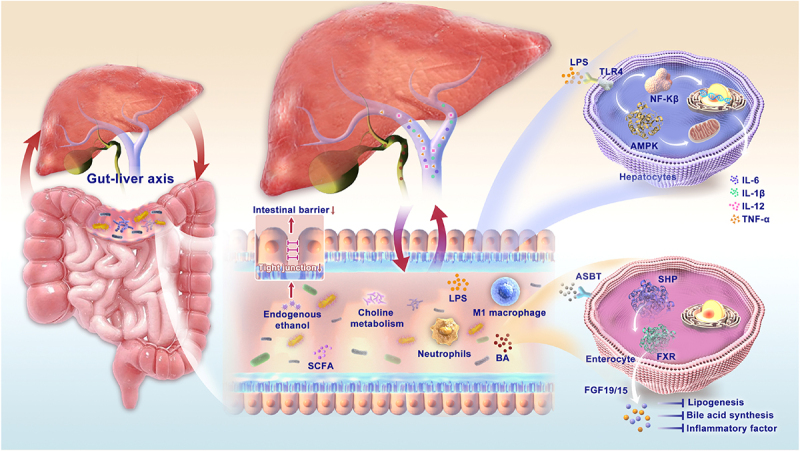Figure 2.

The mechanism of the gut-liver axis: the gut and liver are connected by a complex network of anatomical structures, including the bile ducts, portal vein, and the body’s circulation system. This network facilitates bidirectional communication between the two organs. The liver communicates with the intestine by releasing bile acids and biologically active mediators into the biliary tract and somatic circulation. In the intestine, gut microbiota metabolites are transferred to the liver through the portal vein. The gut microbiota and their metabolites, such as pathogen-associated molecular patterns and endogenous ethanol, SCFA, and BA, can influence the progression of MASLD through a variety of mechanisms. Abbreviations: SCFA: short-chain fatty acids; BA: bile acids; LPS: lipopolysaccharide; AMPK: AMP-activated protein kinase; NF-κB: nuclear factor-κB; IL: interleukin; TNF: tumor necrosis factor; ASBT: apical sodium-bile acid transporter; SHP: small heterodimer partner; FXR: farnesoid X receptor; FGF: fibroblast growth factor.
